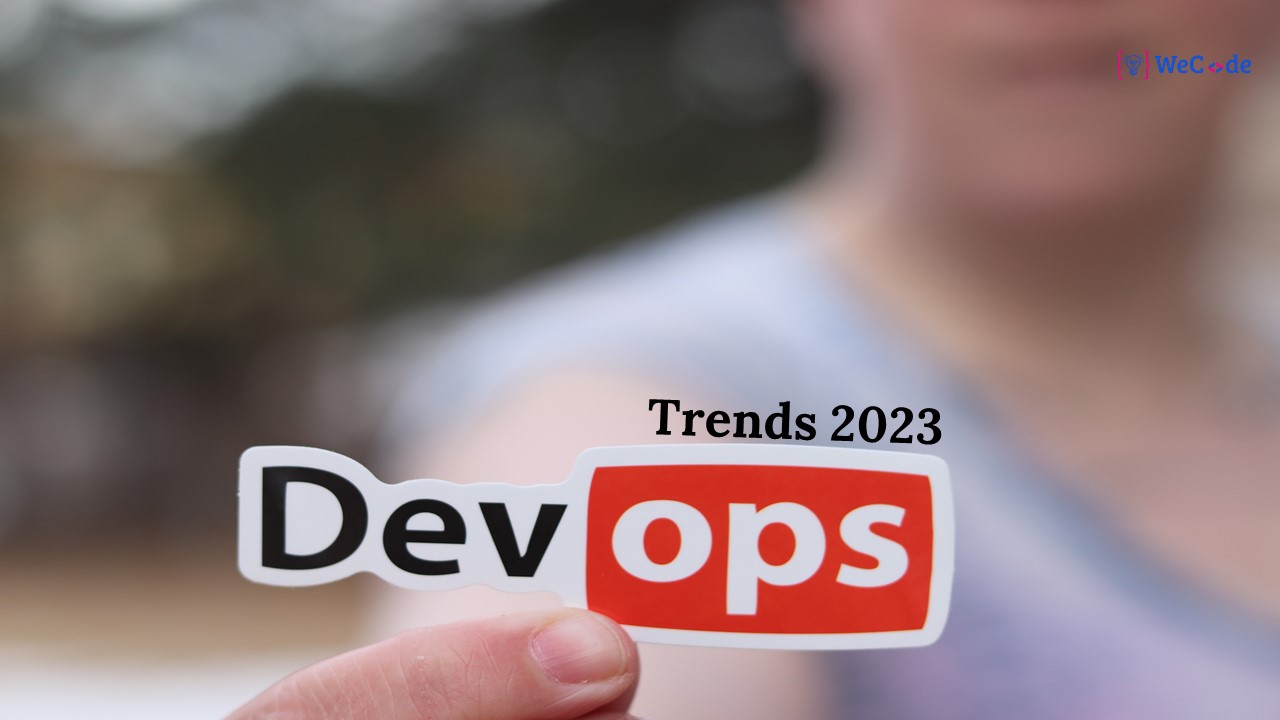Future Of DevOps Trends 2023 PowerPoint PPT Presentation
Title: Future Of DevOps Trends 2023
1
Trends 2023
2
Introduction
Technology is transforming every aspect of
industry, and digitalization and automation have
flourished in the past few years. DevOps has
established itself as an indispensable software
development methodology for successful digital
transformation. According to a recent market
survey, the DevOps market will exceed 20 billion
by 2026, growing at a CAGR of 24.7 from 2019 to
2026. DevOps has facilitated rapid and dependable
software development, delivery, improved quality
and higher customer satisfaction. As DevOps
becomes more widespread, it will be used by more
companies to achieve greater levels of efficiency
and cost savings. As a result, more trends
related to DevOps will emerge. Here are the
Future of DevOps trends we expect to see in 2023
3
DevOps Trends
- Serverless Computing
- Microservices Architecture
- Low-code Applications
- Infrastructure as Code
- DevSecOps
- Kubernetes and GitOps
- AI and ML
4
Serverless Computing
1.
5
Serverless Computing
- Serverless computing is a type of cloud computing
where developers can write code and run
applications without worrying about the
underlying infrastructure. It has been growing in
popularity over the past few years as
organizations have realized how much easier
serverless computing allows them to work with
cloud providers. And as a result, this trend will
continue to grow rapidly in 2022. Serverless
computing will help DevOps teams reduce costs,
increase developer productivity, and simplify
continuous deployment processes.
6
Microservices Architecture
2.
7
Microservices Architecture
- With the microservices architecture, each team
focuses on building small pieces of functionality
that can then be combined into larger
applications or systems. This approach enables
greater efficiencies in software delivery,
allowing teams to release smaller features more
frequently. In 2022, we can expect microservices
architecture to make processes faster, cheaper,
and safer for organizations that adopt DevOps
practices.
8
Low-code Applications
3.
9
Low-code Applications
- To keep up with the demand for new applications
and features, many organizations have turned to
low-code/no-code development to deploy
applications swiftly. Adopting a low-code
approach with DevOps is a game-changer. It
enables developers to experience higher agility
and gives the organization a competitive
advantage in the fast-paced, demanding software
market. - Low-code applications allow non-technical
citizen developers to contribute to software
development with the help of visual interface
integration. In addition to end users, developers
and DevOps engineers are set to play a crucial
role in this trend, using low-code platforms and
tools that offer drag-and-drop elements and other
extensions. These low-code application
development tools support every aspect of
software development, including app ideation,
analysis, software design, code development,
quality assurance, deployment and documentation.
10
Infrastructure as Code
4.
11
Infrastructure as Code
- Infrastructure as Code (IaC) is a development
practice that automates the deployment and
ongoing operation of application and service
infrastructures. Managing infrastructure isnt
easy, so why not automate it? With IaC, you dont
have to worry about manually configuring new
resources or updating your infrastructure. As a
result, organizations can spend less time
managing infrastructure and more time focusing on
developing and deploying apps.
12
DevSecOps
5.
13
DevSecOps
- Security is becoming increasingly important for
all types of applications and infrastructure.
This means that DevOps engineers must work
closely with security experts to ensure that
sensitive data remains safe while applications
are deployed and updated. DevSecOps is a term
that describes these kinds of collaborations
between technical teams and security experts.
Organizations that have adopted DevSecOps
strategies report better security outcomes, so
you can expect this trend to continue in 2022.
14
Kubernetes and GitOps
6.
15
Kubernetes and GitOps
- Kubernetes is an open source container
orchestration platform emerging as an
infrastructure trend on the operations side.
Kubernetes will expand further into the software
development space in 2022 and beyond. It will
ease the task of starting a local Kubernetes
cluster on a developers machine. Kubernetes
security is expected to take center stage as
well, through infrastructure-as-code (IaC)
scanning. - GitOps is a Kubernetes-related infrastructure
trend that allows developers and IT operators to
use Git to manage clusters and deliver efficient,
secure applications without misconfigurations. It
automates releasing incremental updates, and
consistent delivery will enable developers to
build, test and deploy software rapidly.
16
AI and ML
7.
17
AI and ML
- Artificial intelligence and machine learning have
already transformed the way businesses operate
nowadays. In 2022, it is anticipated that AI/ML
will further streamline and accelerate every
phase of the SDLC. It enables DevOps teams to
enhance their performance through intelligent
automation, improving feedback and managing
alerts. - Advanced analytical methods like predictive
analytics are becoming increasingly important as
the market evolves. AI can enable proactive
investigation of the DevOps pipeline to identify
problems and offer possible solutions. AI and ML
integration also enable deep learning, data
mining, statistics and modeling, becoming an
integral part of your business workflow. - Credit by- Devops- Techbeatly
18
Conclusion
- DevOps continues to evolve and pivot to drive
significant IT transformations that directly
bolster business goals and objectives. It will
assist in enhancing the companys ability to
design, produce, launch and maintain high-quality
software development solutions. The above trends
will help organizations move rapidly beyond
automation, focusing on continuously improving
outcomes. These trends are catalysts for creating
a regular and dependable release pipeline and
building better communication between
development, IT and business teams. Visit our
website _at_ WeCode
19
- DevOps Development
- Mobile Application Development
- Cloud Computing Services
- Quality Assurance
- Digital Marketing
- Visit www.wecode-inc.com
- Email sales_at_wecode-inc.com

